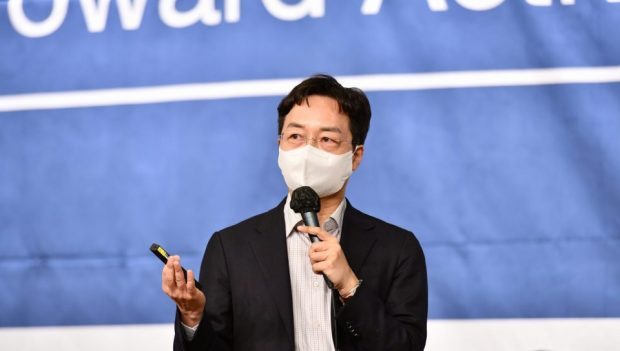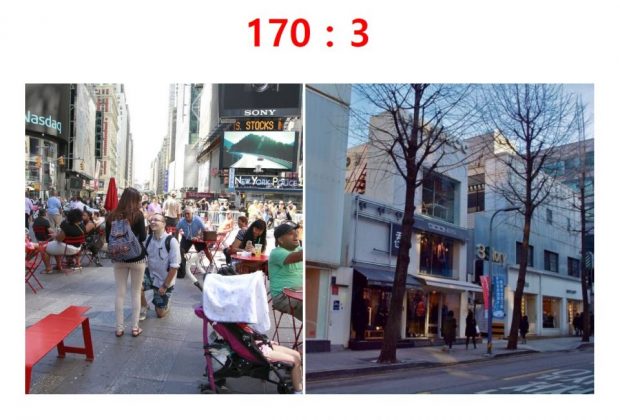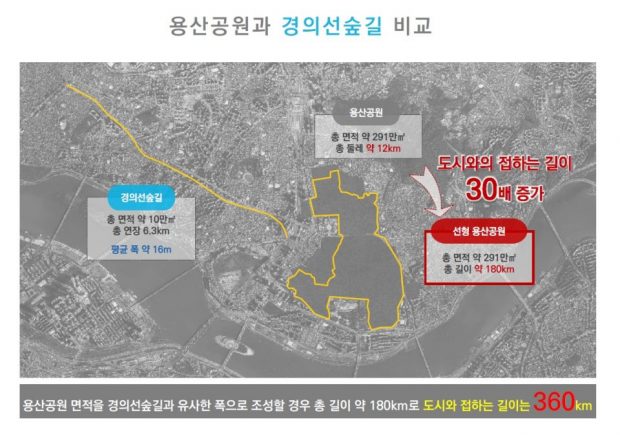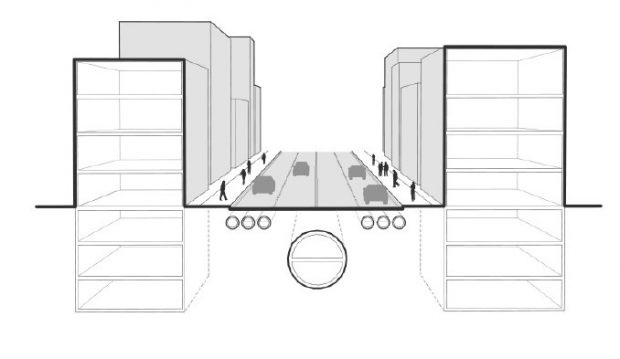
Polarization of space and reconstruction of offline space for a sustainable society

By Hyunjoon Yoo
Professor, College of Architecture and Urbanism, Hongik University
SEOUL: Today’s talk is about how to make a more sustainable society by changing the spatial structure.
The polarization of space is emerging as a new social issue. Because space is limited, prices are bound to go up. In particular, if you look at Seoul alone these days, the average house price is approaching 1 billion won.
Younger friends buy cars instead of houses because they are too expensive to buy. Because when you buy a car, the space inside the car becomes your own space that you can use as you like.
However, college students who cannot afford a car usually pay about KRW 5,000 to rent a space in a café. High school students who do not have the money go to the PC room in the basement with 3,000 won. Middle school students who do not have more money than that pay 1,000 won to go to a convenience store, and elementary school students who do not have more money go to the free metaverse and play roblox. The less money people have, the more time they spend in virtual space.
An extreme example of this was the movie “Parasite”. At the beginning of the movie, you can see that the family living in the semi-underground is constantly looking for Wi-Fi. However, when the same person is living in a wealthy house, they enjoy the life of lying in the yard and reading a book. Because I can enjoy the offline space, I live offline rather than online.
Offline space that you can enjoy with money
These phenomena are still happening all around us. Lotte Department Store recently announced a plan to increase the space for luxury stores, which accounted for about 20% of the total floor space, to 50%. From the perspective of department stores, they don’t have to deal with such consumers anymore because they buy mid- to low-priced items through online shopping. So, who goes to the department store? Rich people go there to buy expensive things.
A clear example is ‘The Hyundai’ department store in Yeouido. The slabs on the 6th floor were completely removed, and the 5th floor was decorated with a garden. What did you do while reducing the total floor space in this way? We made a garden and brought nature. And I made a skylight.
Traditionally in architecture, it is well known that department stores and gambling houses do not make windows. It’s because you shouldn’t look at the scenery outside and see that time is passing. However, shopping centers that are being built these days break through the sky to compete with the online shopping space.
In the offline shopping space, you have to bring something that is not available online, and nature is a typical example. So, to bring that nature, we drilled through the skylight. The problem with decorating nature with potted plants is that only people with a lot of money can visit these spaces. More and more of the space is becoming a space that can only be used with money.
A space that I can enjoy with the least amount of money is the ‘bench’
As such, the government should create more offline spaces and places with nature that can be used for free. One of the least expensive ways to build one is to place a bench. Being able to sit and write anywhere means ‘I can enjoy that space’.

The picture on the left is a view of New York City. The 950m long Broadway has 170 benches. If you look at Garosu-gil in Sinsa-dong on the right, there are only three benches on the same street. People who live in the same city as the one on the right have to pay to enter a coffee shop to sit down because their legs hurt on the way. Then people with a lot of money will go to a 5,000 won Starbucks, and those without money will go to a 1,500 won coffee shop.
In such a society, the space and place that I can enjoy depends on my economic background. Even if you live in the same city for 10 to 20 years, it becomes increasingly difficult to have the same memories. That is why it is necessary to provide a space where we can have common memories in our society.
What matters is the shape, not the size of the park
The most important thing when reorganizing a space is a park where everyone can enjoy the increasingly precious nature. How the park is distributed is more important than its size. It’s not that we don’t have parks. In Seoul, the percentage of green space is in the high 30s. It is similar to Manhattan, but the problem is that our parks are large in size, but the accessibility is not good. Usually you have to go by car or subway.
It is much better to make 10 parks of 1,000 pyong than it is to make one park of 10,000 pyong. So, we need to create a park that can be reached within 10 minutes on foot. It would be much more efficient to make 100 libraries with 10,000 books than to make one library with 1 million books.
It’s also time to think about the shape of the park. The people who benefit the most from creating a park are those who live near the park. At this time, we can choose whether to make a park that is close to a square or a park that is linear.

If you create a park with an area of 100 square meters, in the case of a square, it will have a total side of 40m from 10m in width and 10m in length. If this area is increased in the ratio of 1 to 10, the length of the side increases by about 1.7 times to 70m, and if it is increased more strongly by 1 to 100, the side length increases by 5 times to 200m. The more you stretch, the longer the side lengths.
Yongsan Park covers an area of 900,000 pyeong, with a circumference of 12 km. If the same 900,000 pyeong is extended into a park with a width of 16m like the Gyeongui Line Forest Road, the side length will increase to 360km. That’s a 30-fold increase, so 30 times more people can benefit.
This is not to say that Yongsan Park should be made like that. Professor Jae-Chun Choi, who is next to you, will be against it, and I am against it. Existing parks have a purpose as an ecological park, so they are left as they are, and other parks in the future will be effective if they are made linear as much as possible.
Yeonnam-dong – Gongdeok-dong, a community connected by the Gyeongui Line forest road
Parks like Gyeongui Line Forest Trail have another characteristic. It is to connect different regions. Before the Gyeongui Line Forest Trail Park was created, Yeonnam-dong in front of Hongik University and Gongdeok-dong in Mapo-gu were completely different neighborhoods.
After the park was created, people from Gongdeok-dong go to Yeonnam-dong, Mapo-gu, and people from Yeonnam-dong go for a walk to Gongdeok-dong. It becomes a community that shares the same space as they come and go.
The more linear parks are created in a city, the less the gaps between regions and the more opportunities to create common memories. But the problem is that there is no land. The most practical way to secure land is to clear the road.
How can I clear the road? Since we cannot restrain the movement of people, there seems to be a way to bring the logistics down. Vehicle logistics occupies about a third of the entire road, and it would be expensive to unload the trucks and drill the tunnels the trucks travel through. Instead, if you make a tunnel that only small robots like self-driving robots go through underground like a sewer, you can decentralize logistics.
If the logistics tunnel is drilled as shown in the photo below the four-lane road in Seoul, there will be fewer vehicles on the ground, and there will be room for a linear park there, right? Why is this important? This is because this new space becomes a ladder that moves between layers.

If you look at history, in the past when European society was difficult between classes, people like Ireland and Italy all moved to the United States. They could have their own land by planting a flag there. Those who got the land of opportunity for free amassed wealth and built America. People who couldn’t accumulate wealth in the eastern United States headed west when the railroad was opened, where they made money by creating Silicon Valley.
The same goes for our country. In the past, people who farmed without their own land in the past came to Seoul to make money when a new city called Seoul was established. who made money In a city, people who make and sell things that city dwellers need, such as apartments and automobiles, made money. So, Joo-Young Jung made the most money, and LG and Samsung, which made electronic products, also made a lot of money.
However, when chaebol companies took control of the Korean economy in the 1970s, various social problems arose. There was a lot of talk that the chaebol should be disbanded to solve the problem, but in reality, a new space called a virtual space was created and the problem was solved.
When there were no computers, optical cables were laid to create a virtual space, and new emerging codes such as Naver and Kakao began to emerge from there. We must constantly revolutionize space. If you look at the short history of Korea, it can be said that the representative space reform in the 1970s was the apartment.
Before apartments were built, land was owned by very few landlords. But when I built an apartment in empty space with reinforced concrete and an elevator, I suddenly got a real estate asset. Looking at the country as a whole, it can be seen that the world has become a world where all middle-class people who buy apartments become landlords as real estate assets are soaring.
In the 1990s, virtual space did just that. A lot of people went to venture companies, and even among the young people who had no assets, they got a kind of real estate asset called a virtual space for free. I got an opportunity to create new wealth with those assets.
So, in the 2020s, we need to think about what kind of spatial revolution we are making. In fact, it can be seen that they have not been doing anything since the ‘internet revolution’ and ‘virtual space revolution’ in the 1990s. That’s why I think that such revolutions are necessary.
Grounding leads to efficiency in space and energy use
In the first place, as these technologies develop, they hide out of sight. Electric lines were also underground, and all of the water, sewerage and subway were underground. We believe that moving infrastructure facilities underground is necessary for the next generation.
Grounding is also good for energy efficiency. If we eat a pizza delivered by motorbike, we have to carry 161kg, including the weight of the motorcyclist and motorbike. On the other hand, an autonomous robot that travels through an underground logistics tunnel needs to carry only 11 kg.
A lot of people say, ‘How about using a drone?’ However, drones use energy when moving horizontally, and energy must also be used to defy gravity while floating. In terms of energy efficiency, drones are a very bad case. Even if you want to float a 1kg object, it is heavy, so the motor needs to be large, and as the motor gets bigger, the battery needs to get bigger. As the battery gets heavier, a vicious cycle arises in which the motor also grows proportionally. Drones cause problems not only in energy, but also in noise. Therefore, it is a system that is difficult to use in the city center.
Assuming that we put things that need to move quickly into an invisible underground space and cut 16-lane roads above the ground by half to create a linear park, such a society will be a society in which people can communicate more and walk more. I think that a society that more communities make autonomously will become a sustainable society. Changing the design of a space can change society.
There are two ways to change the world. One is a software method, the other is a hardware method. The software methods are tax and administrative policies, and the hardware methods are to change the spatial structure.
It is very difficult to change people’s minds, but I think that if we change the space, that is, change the relationship between people little by little through hardware, we can create a sustainable society.
Hyunjoon Yoo is the representative architect of the Space Consulting Group and a professor of architecture at Hongik University’s College of Architecture. He has won more than 30 architectural awards at home and abroad, and his achievements have been recognized internationally. There are a representative book ‘Space Created by Space’, and ‘The Flow of Contemporary Architecture’, a liberal arts class at Hongik University, was published as a book because of its great popularity among students.
He is well-known to the public for solving architecture from a humanistic point of view through ‘Shinjab’, etc. He is currently talking about the world through space through the YouTube channel ‘Sherlock Hyunjoon’.
NOTE:
This lecture was delivered by Professor Hyunjoon Yoo at the AsiaN Forum marking its tenth anniversary.
The forum, ‘Next Leadership Toward Active ESG’, feature prominent figures and experts, led by former United Nations Secretary-General Ban-Ki moon who delivered the keynote speech.
AsiaN is the media arm of the Asia Journalist Association (AJA).


